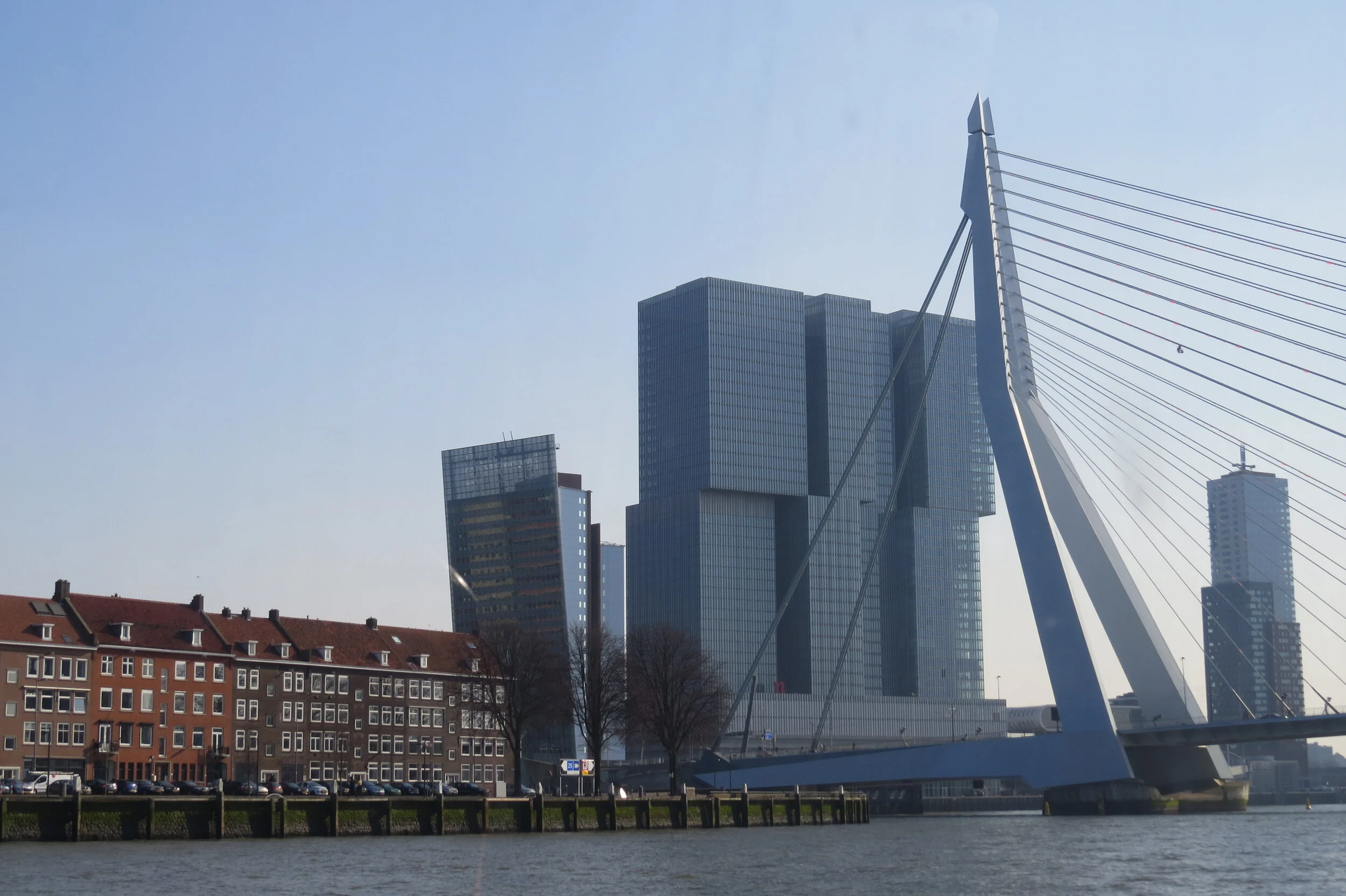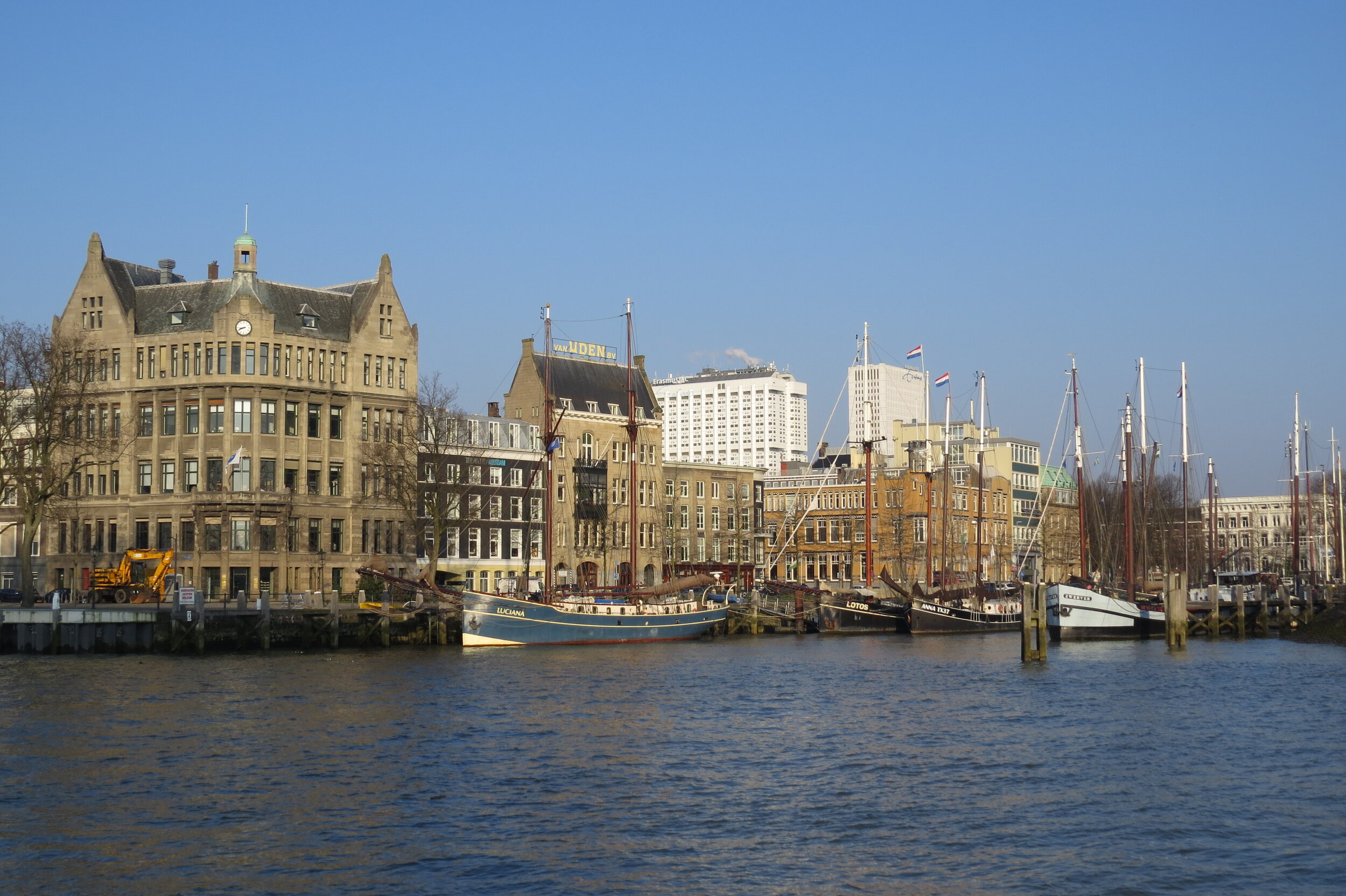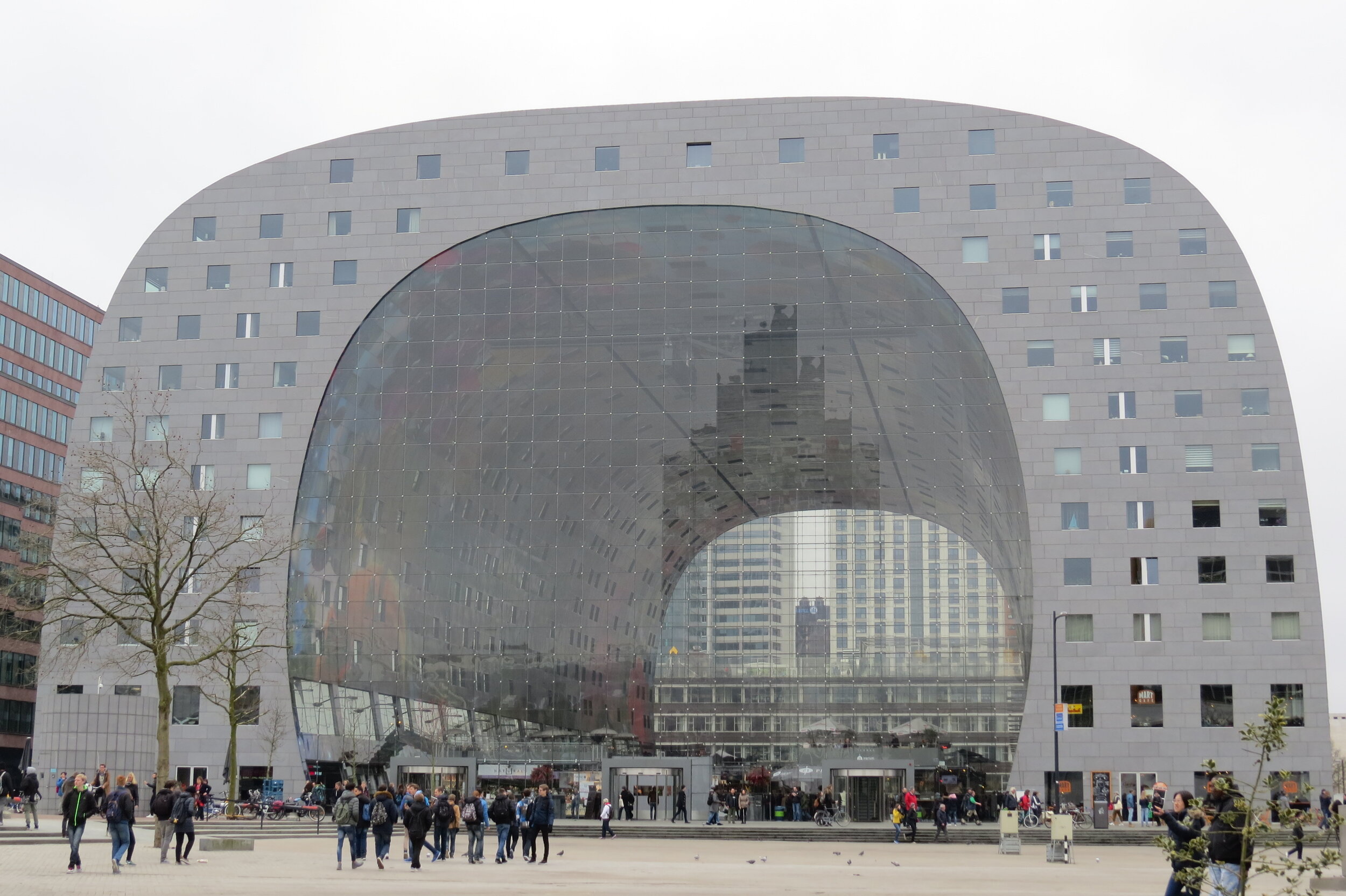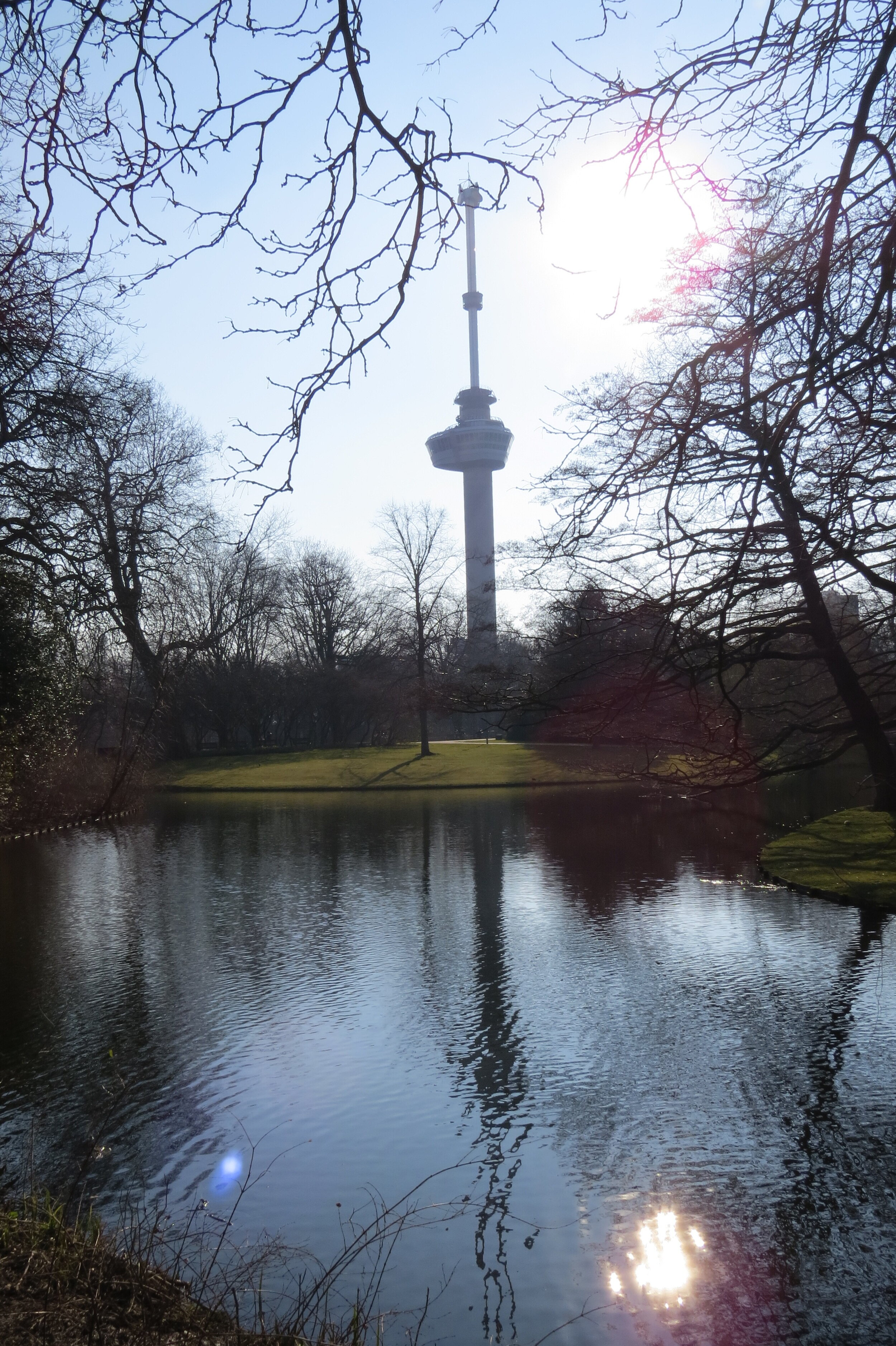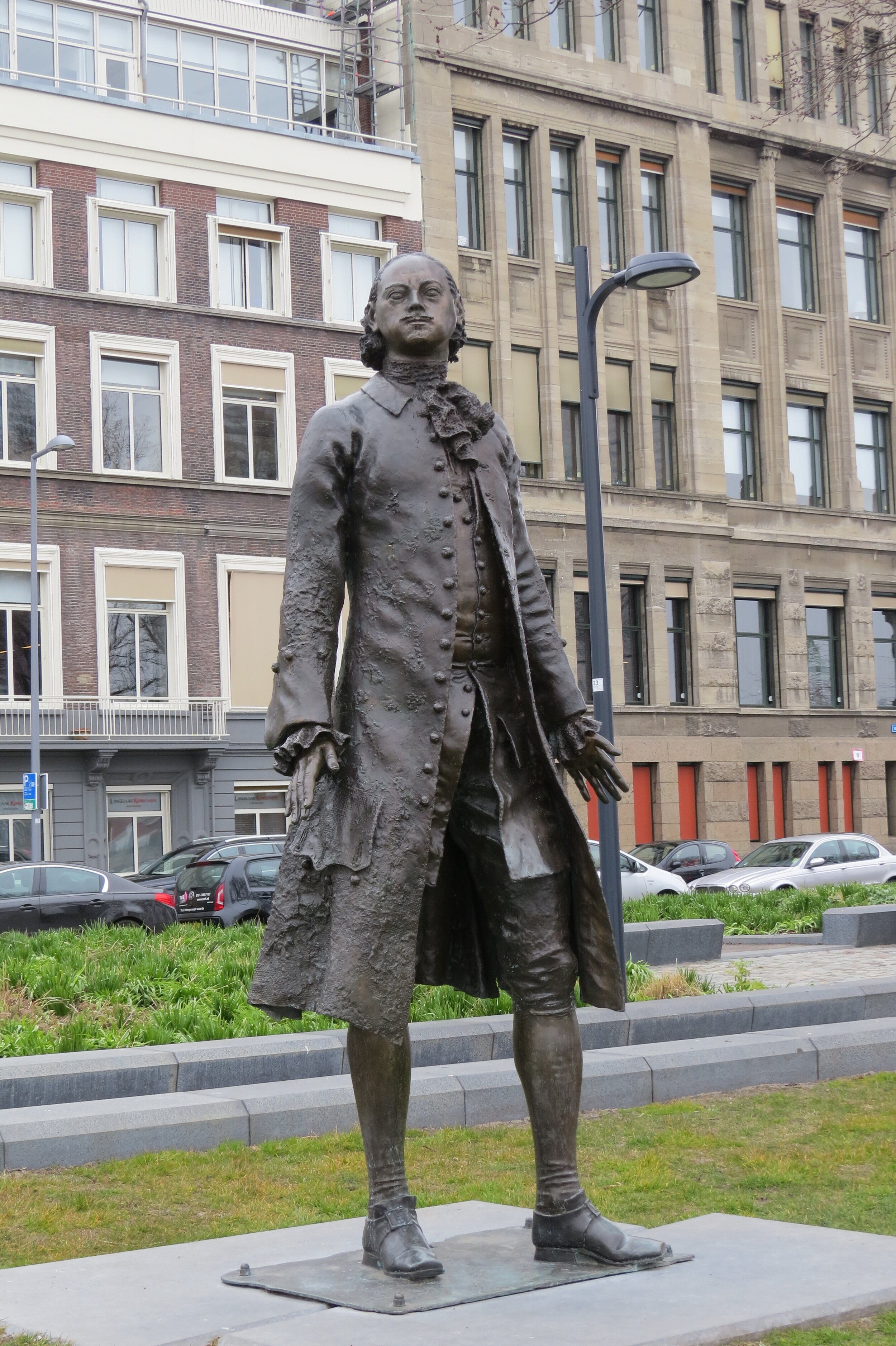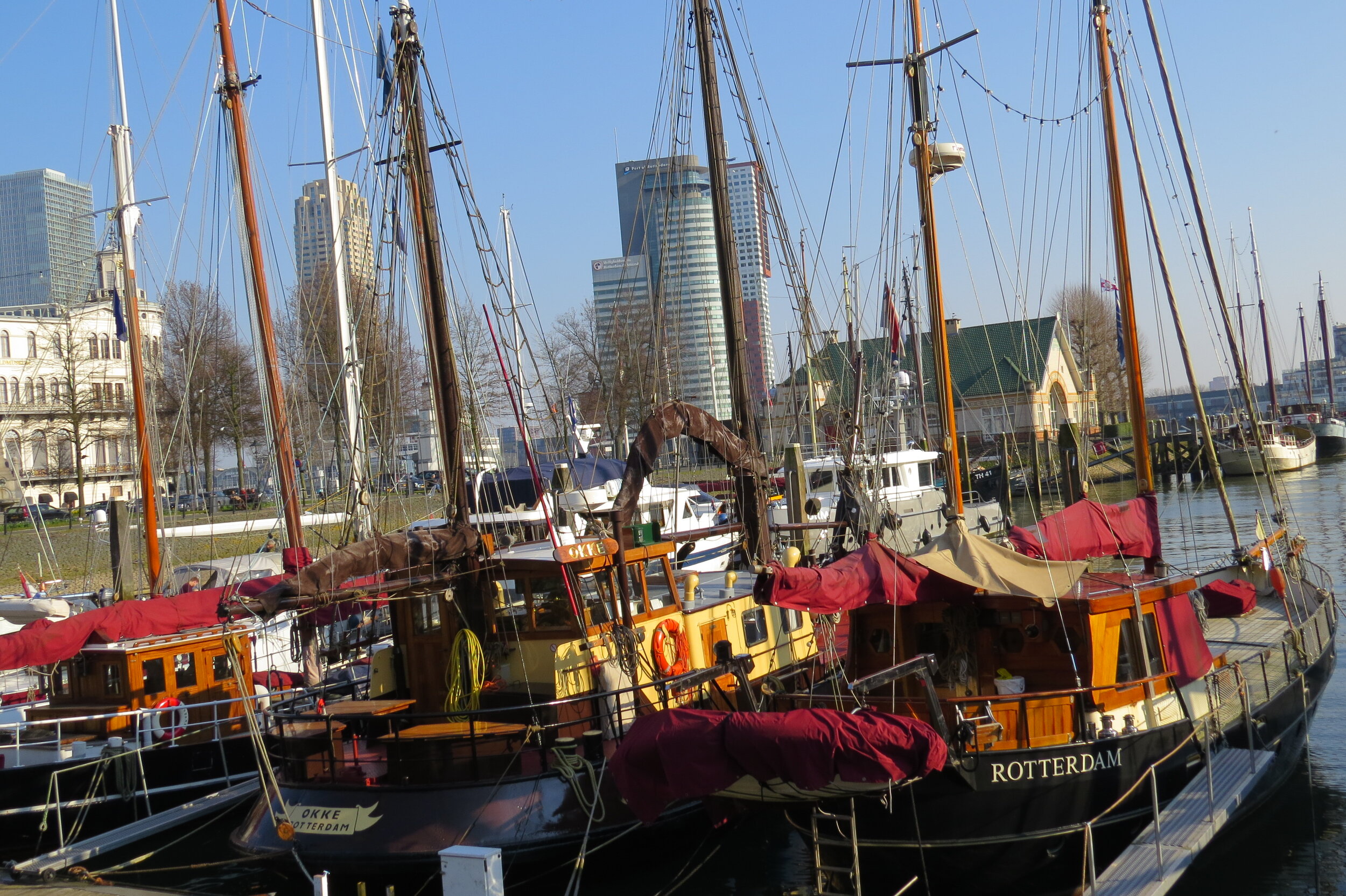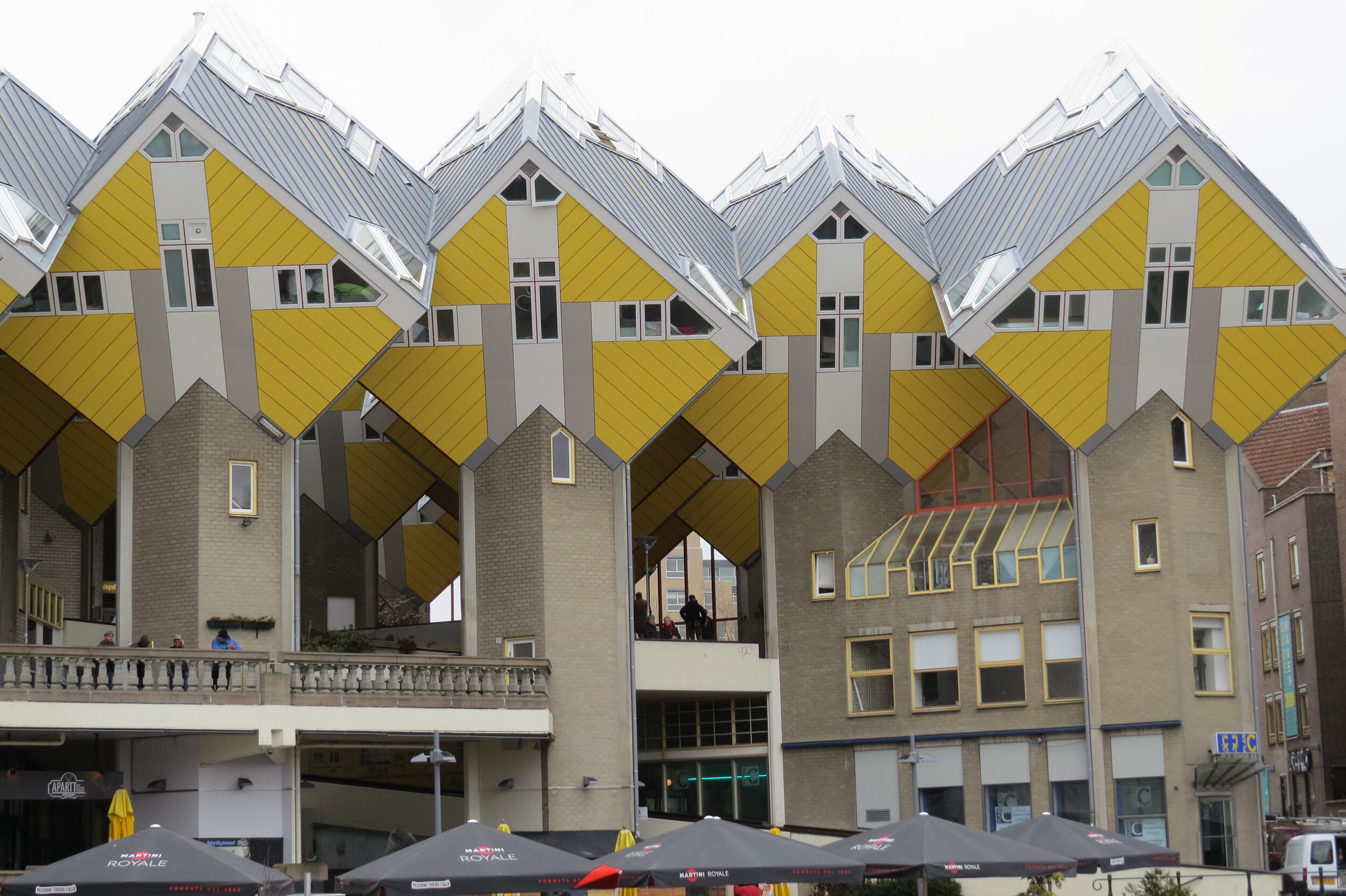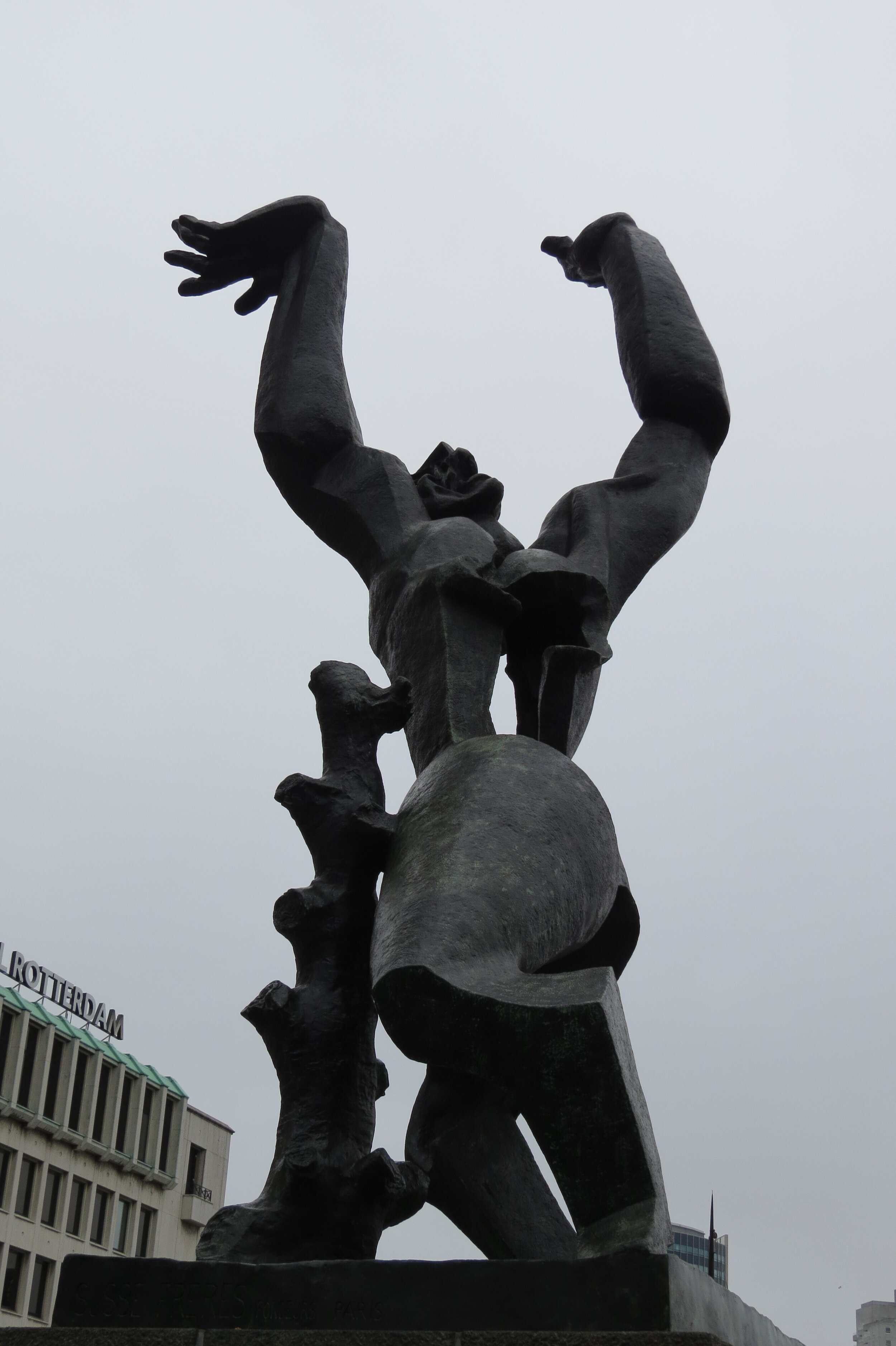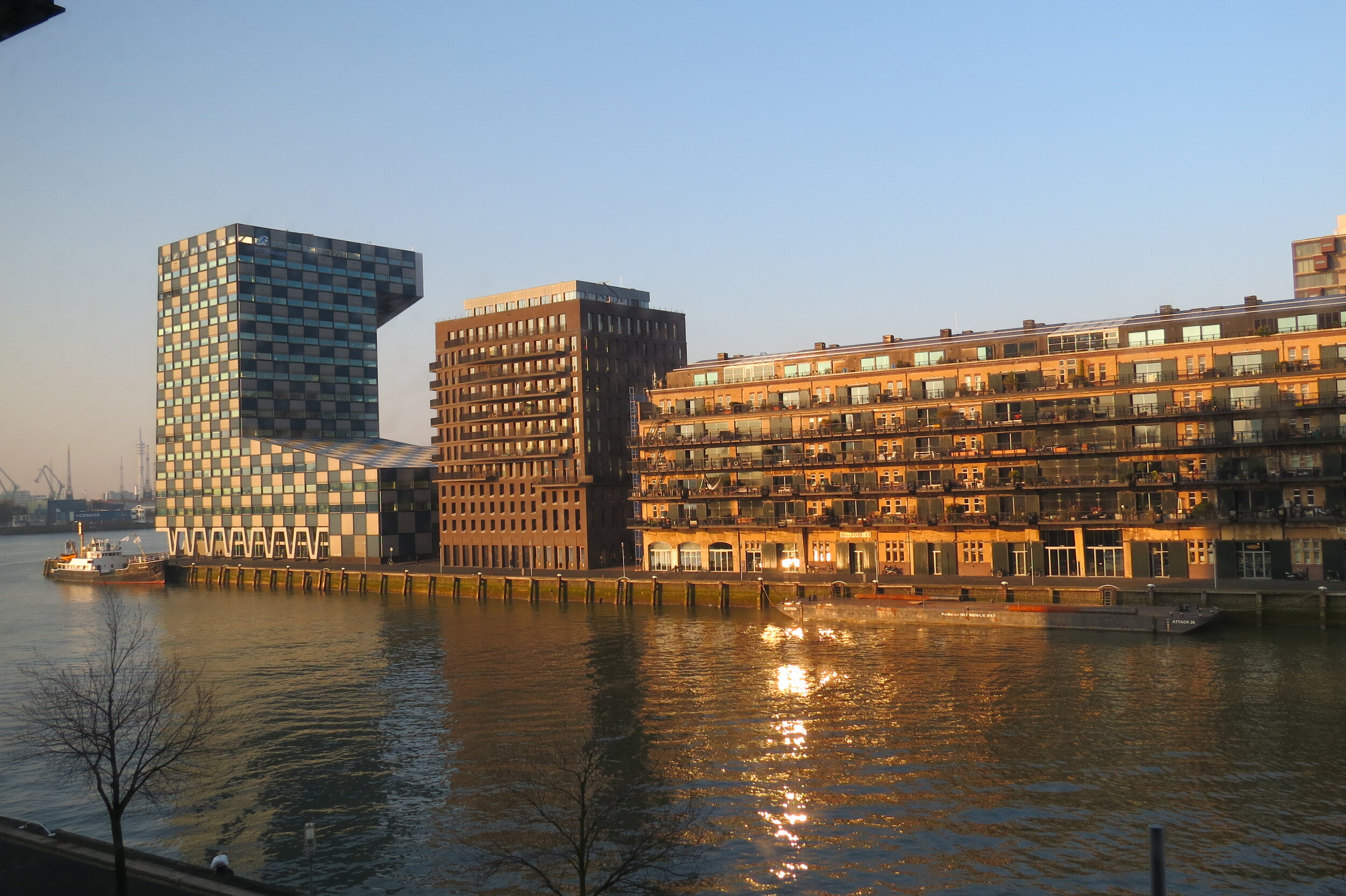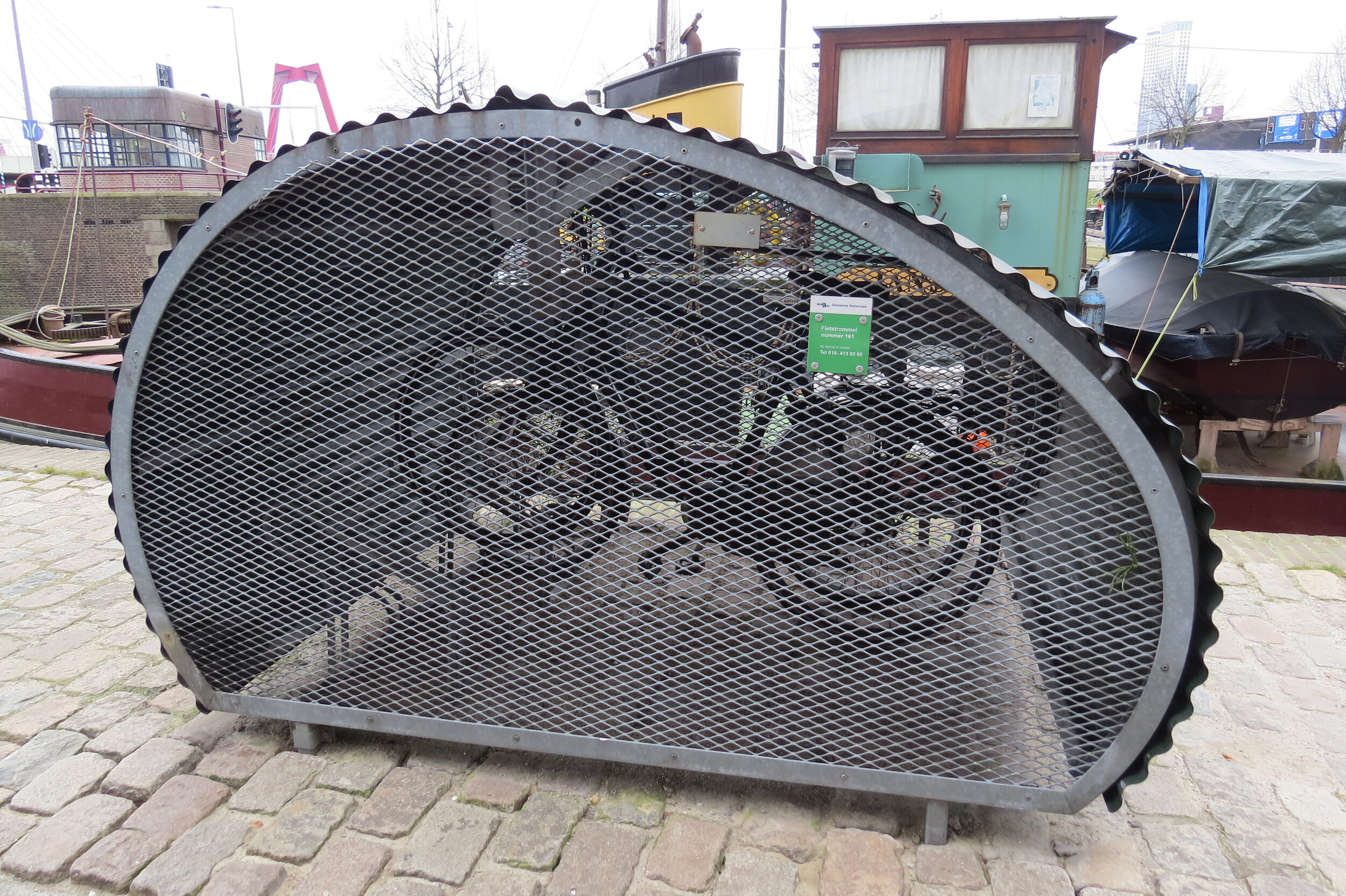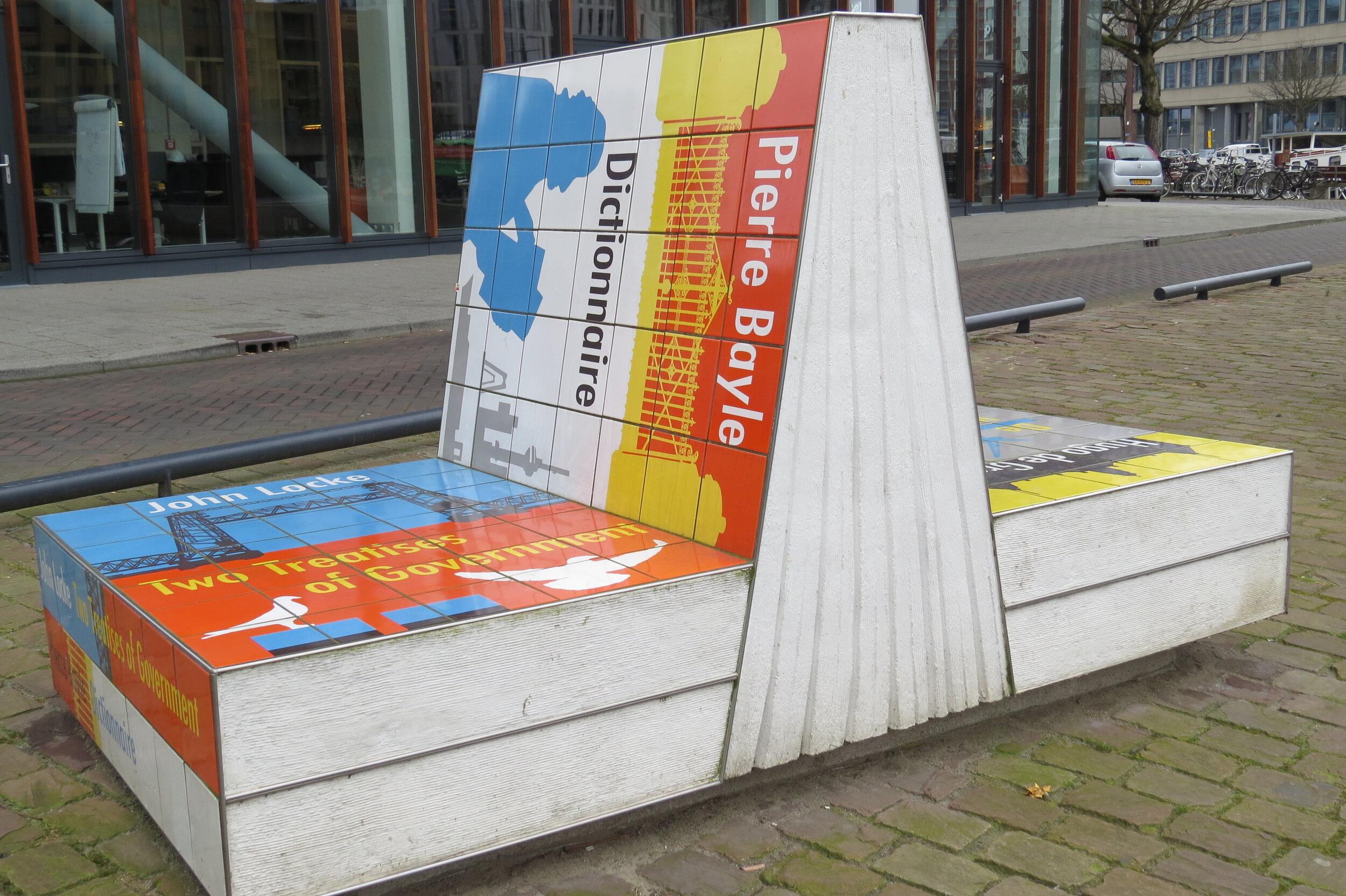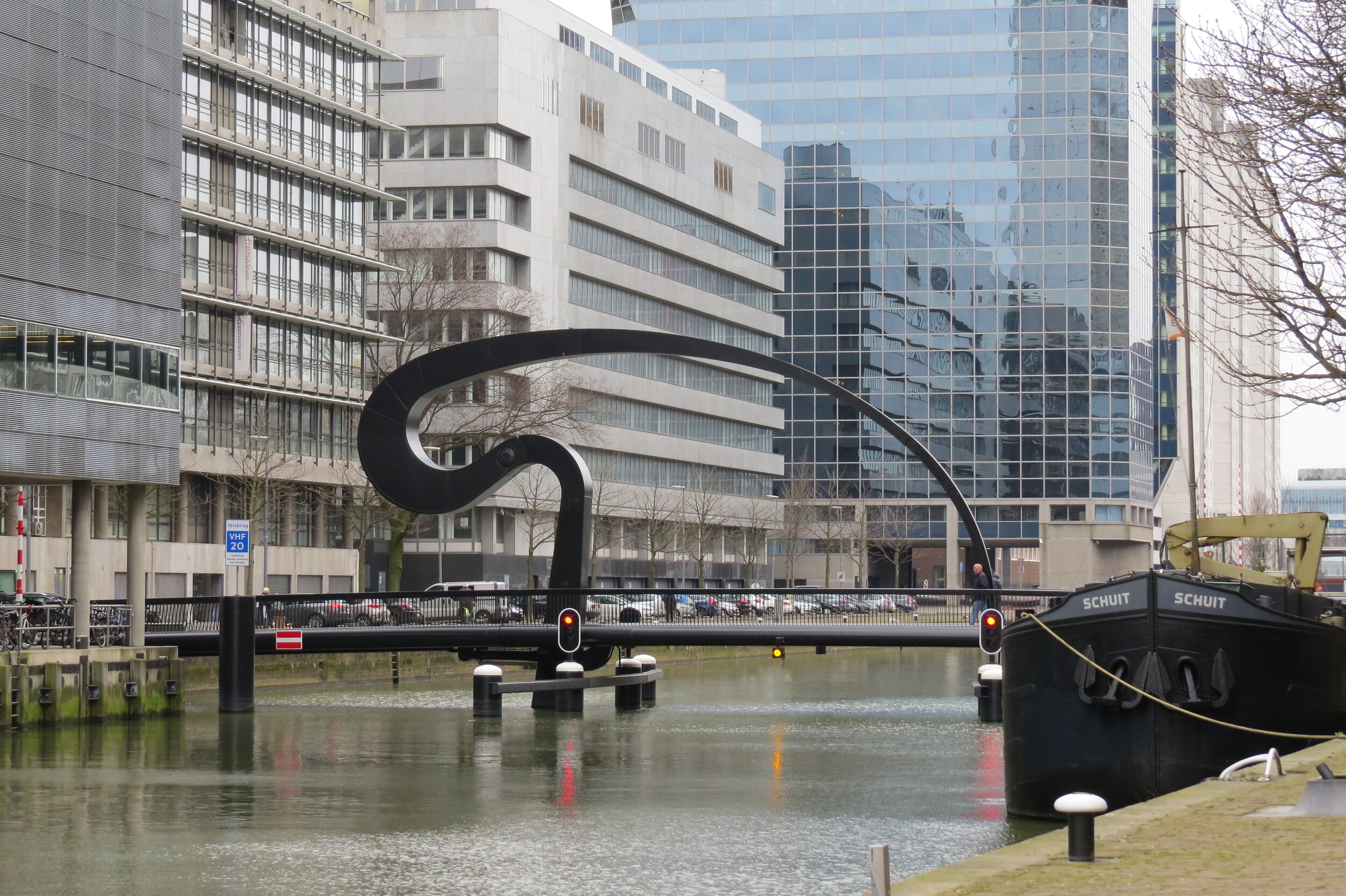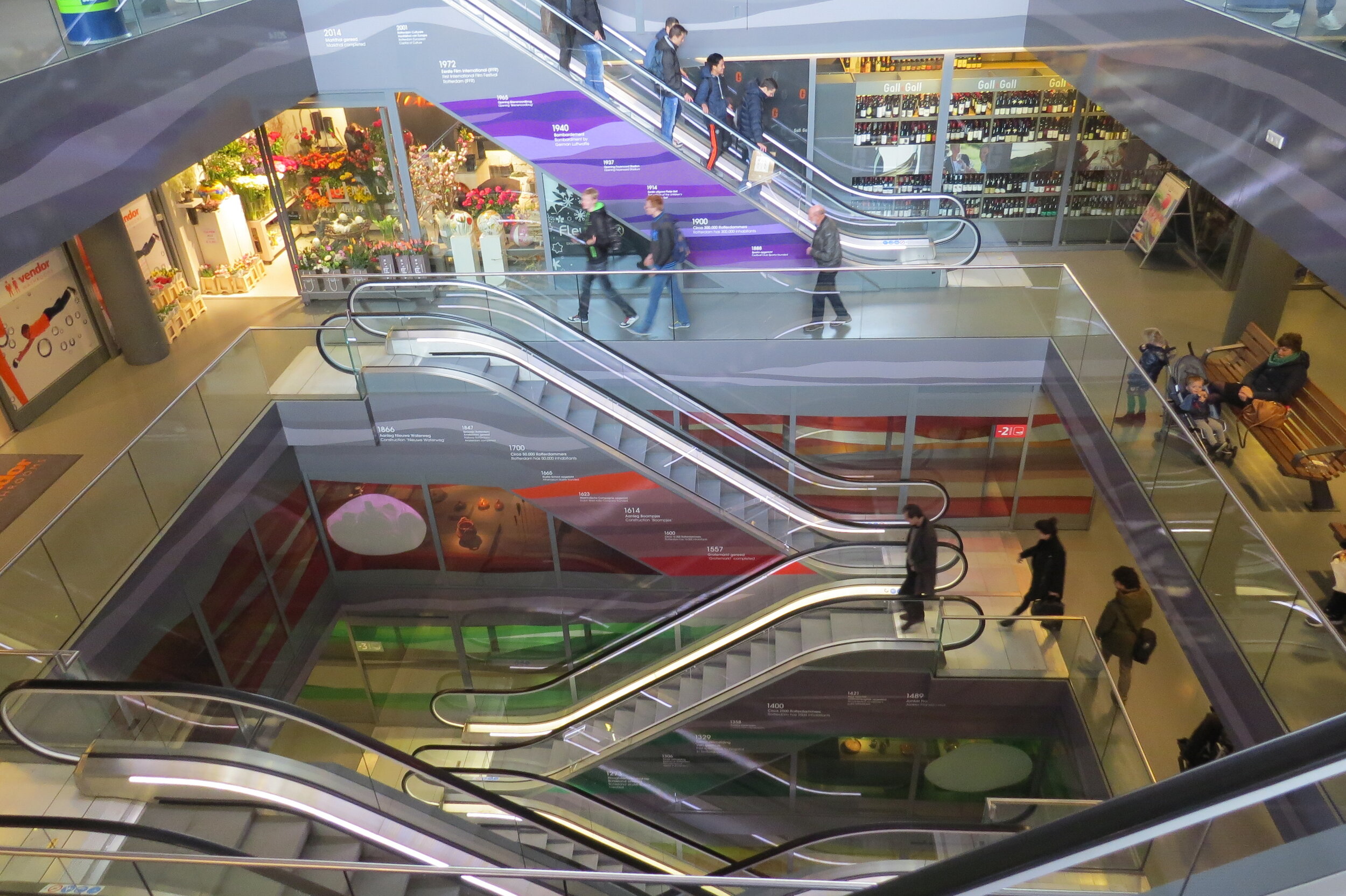As a child, I often visited family in Rotterdam. My parents were born in that city. I grew up a mere 25 km or so away from it. Of course I was familiar with the horrid stories of how Rotterdam had suffered in WWII. It’s heart had been bombed heavily – entire parts of the city had burned and been destroyed. Yet, having lived most of my life away from The Netherlands, I didn’t really know Rotterdam (named for the ‘dam’ in the river Rotte) at all.
Most people visit Amsterdam (named for the ‘dam’ in the river Amstel). So during a recent visit to Holland, we decided to visit and explore Rotterdam. If you are not sure of the names ‘Holland’ or ‘The Netherlands’ and which one to use when referring to the country, just listen to this: https://www.youtube.com/watch?v=eE_IUPInEuc This hilarious video will give you the information but may leave you more confused than ever…
The “Jackie Chan” building..
Rotterdam is easily accessible by car or train from Schiphol Airport (about 60 km). Despite the destruction during the war, a ring of beautiful old houses remains along the rivers Meuse and Rhine, there’s an ornate hotel, an art-deco yachtclub. These old buildings lean comfortably against ultra-modern buildings that were built since 1945. The incredible new architecture of the city gained in popularity, in part thanks to a Jackie Chan movie in which he slides down a sloped skyscraper.
Rotterdam is Europe’s busiest port. Large ships daily bring cargo from all over the world, much as sail ships did a few hundred years ago.
A futuristic Market Hall towers above market stalls. You can now buy sushi and falafel here as well as eat traditional Dutch poffertjes. Old church bells chime among buildings of gleaming steel and glass.
The Swan is a bridge spanning the river Meuse. Its official name is Erasmus Bridge, named after a Renaissance humanist, Catholic priest and social critic from 1400’s Rotterdam. The bridge is 800 meters long and has a 139 meter high pylon and is an eye catcher in the centre of the city.
The Swan and the Rotterdam.
Across the water is The Rotterdam, a building that resembles shipping containers, like blocks placed upon each other by a toddler. They seem to wobble and balance as if they can tumble down at any moment. However, this largest building in Europe is solid and houses offices, homes, shops and much more. Rotterdam seems like a playground for architects.
We visited the famous cube homes: houses that are tilted on one point, and seem to have been juggled into place, landing on their sides. You can visit a show home, climb the narrow Dutch stairs and see how slanted walls and triangular windows form these cube homes into small condos. Not for anyone who feels claustrophobic (there is an AirBnB in one of the cube houses!).
This is one of the best known statues in The Netherlands: ’The Destroyed City' by Ossip Zadkine, commemorating the terrible bombing of Rotterdam on the 14th of May 1940 which destroyed the center of the city. By bombing the city the Germans forced the Dutch to surrender quickly. The fires that followed lasted for days and caused great damage. Approximately 800 people were killed and 80.000 people became homeless.
The bronze statue is a human figure with a distorted face and his hands thrown desperately into the air. It has no heart which symbolizes the destroyed heart of the city. The statue became generally known as Jan Gat, ‘John Hole’ - because of the hole where its heart used to be. People know that, for years, the city had a big open space where its heart used to be. The heart of the city had to be rebuilt.
The city now is testament to the resilience of people, their capacity to rebuilt when given the opportunity. Rotterdam now is an impressive mix of typical Dutch historic buildings and mind blowing new architecture, a unique city in a brave country.
A state-of-the-art Central Station welcomes visitors that come by train. Its huge gleaming hall seems more like an airport than a train station and houses shops and restaurants.
One of our favourite ‘discoveries’ here is the ‘water bus’. This ferry picks up passengers much like a bus but the trip down the river is much more fun. For a few euros it will take you to nearby cities, including Dordrecht. It also stops in Kinderdijk – the world famous dike lined with 19 historic windmills. You can disembark here to do some sightseeing and take a later water bus back to the city. You can even bring your (rented) bike on the ferry.
The view from our AirBnB condo.
We opted to stay in an Air BnB here. There is much opposition to Air BnB accommodations in The Netherlands, especially by hotels. But it’s a bit like comparing apples to oranges. I stay in hotels when I travel for business, to attend a conference or for a short overnight. When I stay longer I’d rather have a place to myself, including a kitchen to make meals. We found an amazing condo on the river – small but very clean and comfortable for a reasonable price. We thoroughly enjoyed getting to know this multifaceted city and highly recommend a visit next time you are in The Netherlands.
https://www.holland.com/global/tourism/information/general/netherlands-vs-holland.htm
Rotterdam, a designer’s paradise: bicycle storage, bench, bridge, mall:
